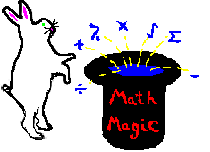

A. Permutations are often confused with combinations.
1. A permutation can be thought of as changing the alignment of a group.
2. In other words, if we had 3 people A, B, and C, one possible permutation can be ABC, while another can be CAB.
3. Permutations come in many forms.
a. Some forms are obvious permutations:
6P3 or P(6,3)
b. Other forms are not so obvious and are written as word problems which is somewhat difficult to recognize.
Ex [1] How many ways can 3 people be seated 3 at a time in 4 chairs?
Ex [2] How many ways can 2 people sit in 5 chairs in a row?
1) One way to know if we are dealing with permutations or combinations, is to answer one question: Does the order matter?
2) If the answer is no, then we will be using permutations, not combinations.
Ex [1] How many ways can 3 people be seated 3 at a time in 4 chairs?
a. We have 3 people: A, B, and C.
b. Does the order matter? Can I have ABC, CBA, ACB, CAB, BAC, and BCA and count them as 6 or do they all count as 1. In this example it would count as 6, so the order does not matter.
In Ex [2] we can use the same reasoning to see that order will not matter in that case either.
B. How to calculate a permutation:
1. This method uses factorials.
2. P(n,r) = n!
(n-r)!
Ex [1] 5P2 = __________.
5!/(5-2)! = 5*4*3*2*1/3*2*1
5*4*3*2*1/3*2*1 = 5*4 = 20.
The answer is 20.
Ex [2] How many ways can 4 people sit in 6 chairs in a row? __________.
Using the same reasoning from above, we can see that order does not matter, so it is indeed a permutation problem.
Notice, we will be using P(6,4).
6!/(6-4)! = 6*5*4*3*2*1/2*1
6*5*4*3*2*1/2*1 = 720/2 = 360.
The answer is 360.
*Note: Sometimes it is easier to cancel some numbers out before multiplying as in Ex [1] step b. Other times it might be easier to compute the numerator first, then the denominator, then divide as in Ex [2] step d.